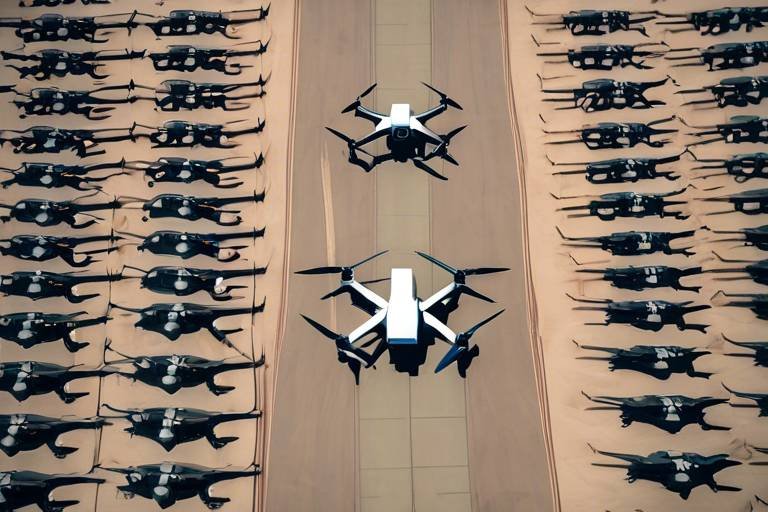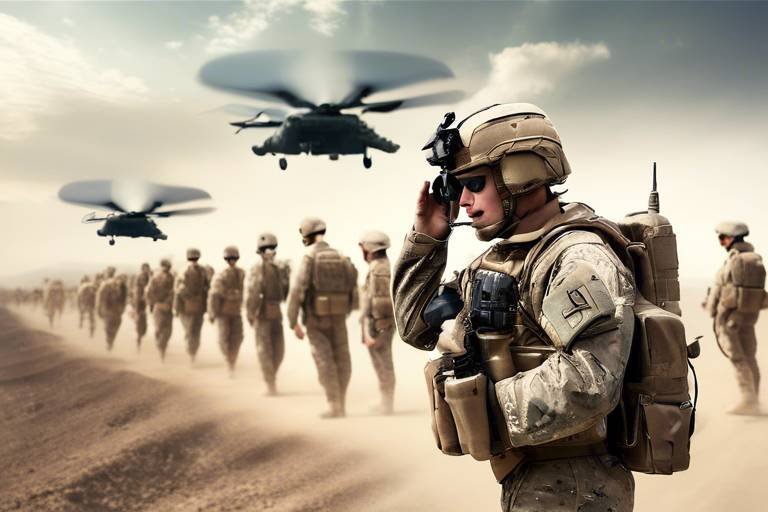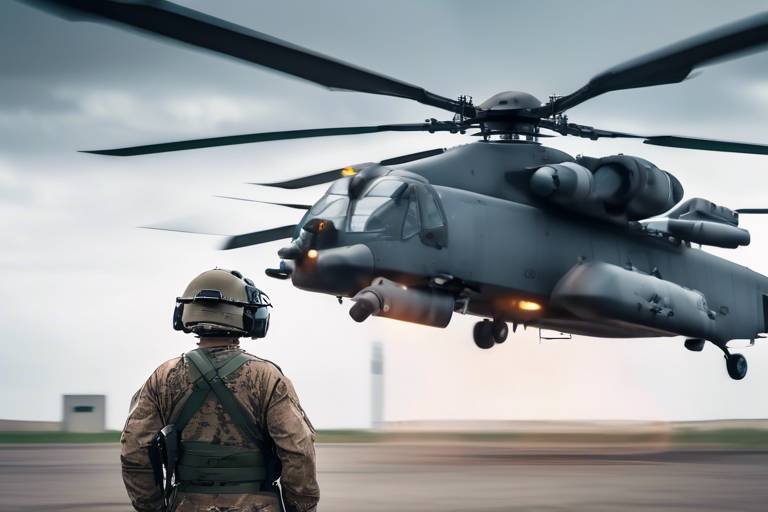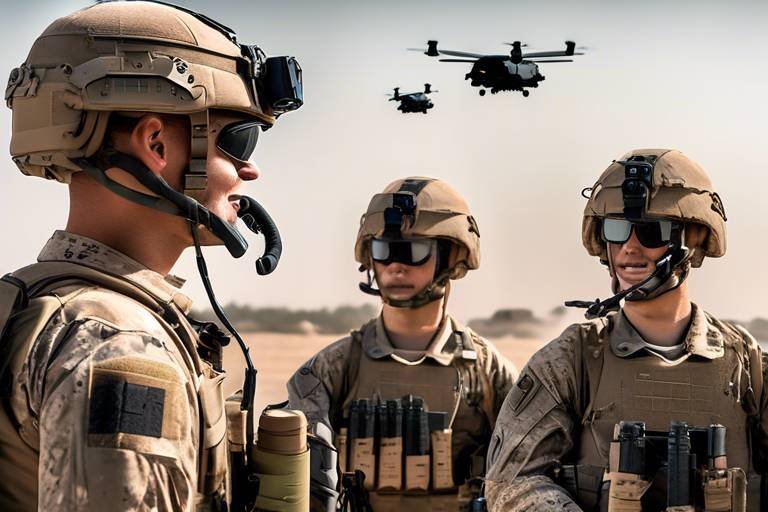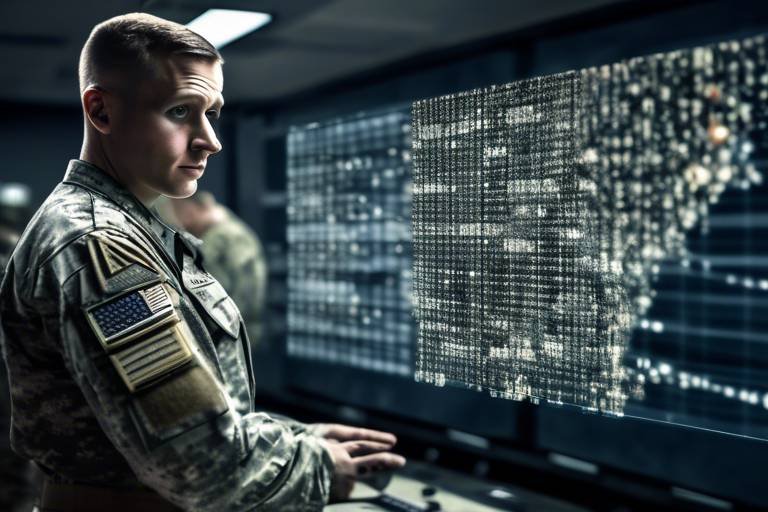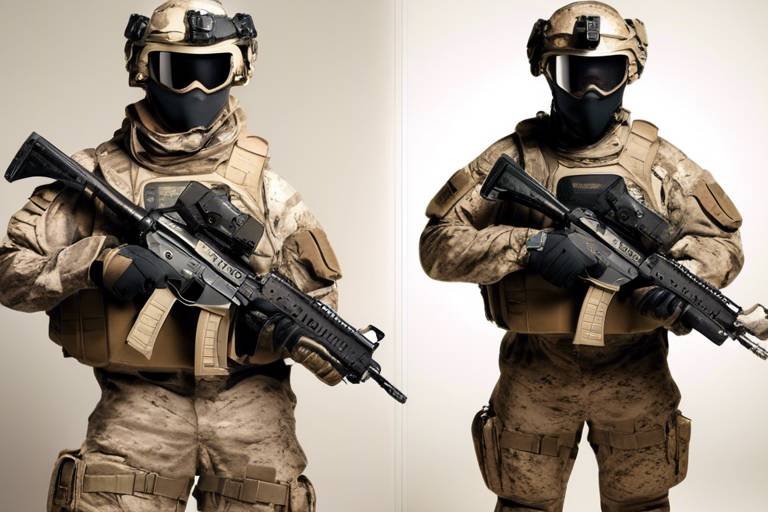How Drones are Changing Military Logistics
The landscape of military logistics is undergoing a seismic shift, and at the forefront of this transformation are drones. These unmanned aerial vehicles (UAVs) are not just a futuristic concept; they are now a vital component of military operations, redefining how supplies and equipment are transported to the front lines. Imagine a world where critical supplies can be delivered to soldiers in remote locations within minutes, rather than days. This is the reality that drones are making possible, and it's nothing short of revolutionary.
In traditional military logistics, the process of moving troops and supplies can be cumbersome and time-consuming. It often involves a complex web of transportation methods, including trucks, ships, and aircraft, each with its own set of challenges. However, with the advent of drones, the entire paradigm is shifting towards a more efficient and versatile approach. Drones can navigate difficult terrains, avoid enemy detection, and deliver supplies directly to where they are needed most, all while minimizing the risk to human life.
The efficiency of drones lies in their ability to operate independently and in real-time. They can be deployed quickly to assess situations, deliver urgent supplies, or even evacuate injured personnel from the battlefield. This rapid response capability not only enhances operational effectiveness but also saves lives. For instance, when a unit is cut off from traditional supply routes, a drone can swoop in and drop essential supplies like food, medicine, or ammunition, ensuring that troops remain sustained and capable of continuing their mission.
Moreover, drones provide real-time tracking of supplies, allowing military leaders to have a clear view of logistics operations. This transparency helps in making informed decisions, optimizing routes, and managing resources more effectively. In an age where information is power, the ability to track assets in real-time is invaluable.
To illustrate the impact drones are having on military logistics, consider the following table that outlines their key advantages:
| Advantage | Description |
|---|---|
| Speed | Drones can deliver supplies in a fraction of the time it takes traditional methods. |
| Cost-Effectiveness | Reducing the need for manned missions lowers operational costs. |
| Risk Reduction | Drones can operate in dangerous areas without putting personnel at risk. |
| Flexibility | They can be deployed in various environments, from urban areas to rugged terrains. |
However, it’s essential to recognize that the integration of drones into military logistics is not without its challenges. From regulatory hurdles to ethical considerations, the military must navigate a complex landscape as it embraces this technology. Questions regarding privacy, international laws, and the implications of autonomous decision-making in warfare are all crucial factors that need to be addressed as drones become more prevalent.
Looking ahead, the future of drones in military logistics is bright. With advancements in artificial intelligence and enhanced payload capabilities, we can expect drones to play an even more significant role in shaping modern warfare. The potential for improved integration into existing supply chains will further enhance their effectiveness, making them an indispensable asset for military operations.
- What types of drones are commonly used in military logistics?
Military logistics utilizes various types of drones, including fixed-wing, rotary-wing, and hybrid models, each serving specific functions such as surveillance, cargo transport, and reconnaissance.
- How do drones improve the speed of supply delivery?
Drones can bypass traditional transportation routes and deliver supplies directly to the required locations, significantly reducing delivery times.
- What are the ethical concerns surrounding military drones?
Ethical concerns include compliance with international laws, privacy issues, and the implications of automated decision-making in combat situations.
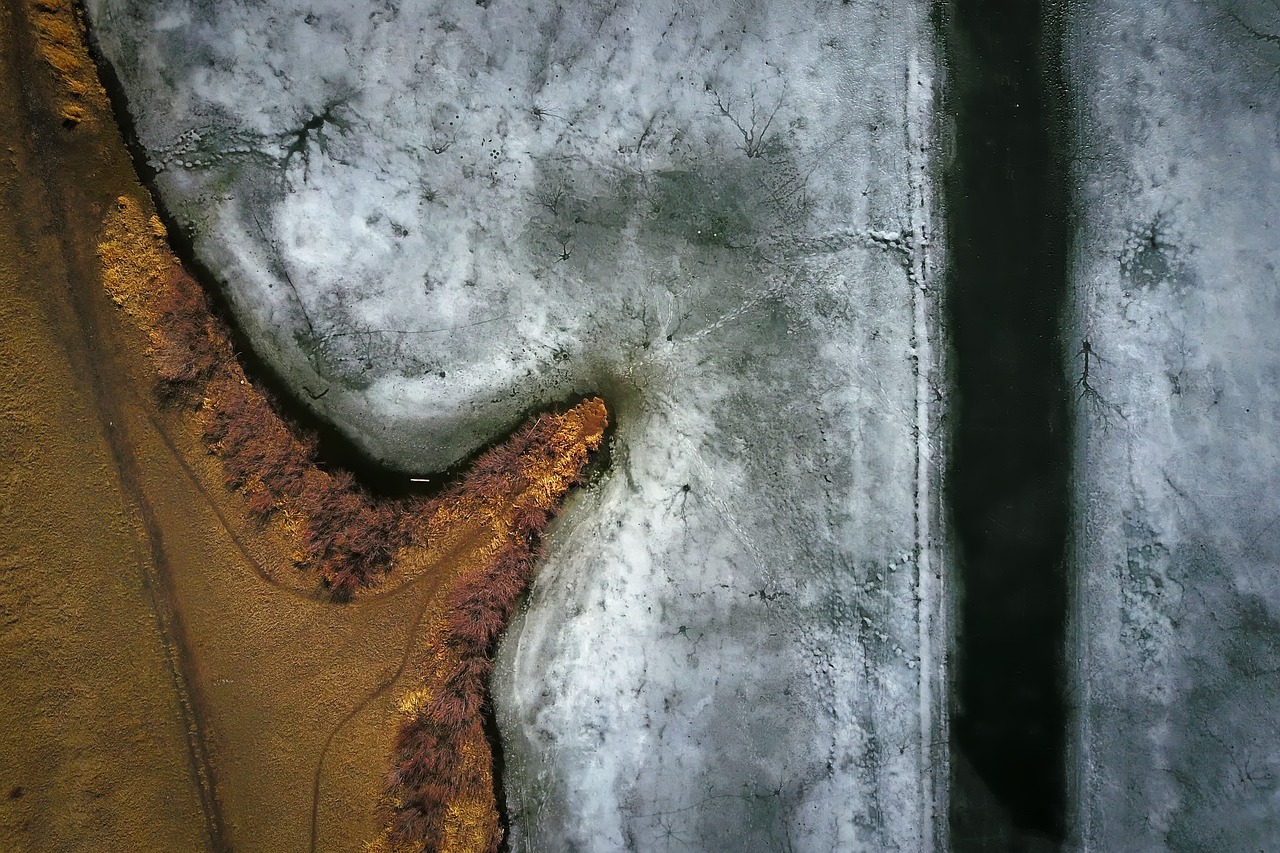
Introduction to Military Logistics
Military logistics is often described as the backbone of armed forces operations. It encompasses a broad range of activities that are crucial for the planning and execution of transporting troops, equipment, and supplies. Imagine a complex puzzle where every piece must fit perfectly to ensure operational readiness and effectiveness in various missions. Without efficient logistics, even the most skilled soldiers and advanced technology would falter on the battlefield.
In essence, military logistics is about ensuring that the right resources are in the right place at the right time. This involves meticulous planning and coordination, taking into account factors such as geography, weather conditions, and the specific needs of the mission at hand. From the moment a decision is made to deploy troops, logistics plays a critical role in supporting those forces. It’s not just about moving boxes from point A to point B; it’s about creating a seamless flow of resources that empowers military operations.
Moreover, military logistics extends beyond mere transportation. It includes maintenance, supply chain management, and even the disposal of equipment. The effectiveness of logistics can be the difference between success and failure in military engagements. For example, consider a scenario where a unit is engaged in combat but runs low on ammunition. The ability to quickly resupply that unit can turn the tide of battle. Hence, logistics is not just a support function; it is a vital component of military strategy.
As we delve deeper into the role of technology in military logistics, it becomes evident that innovations like drones are reshaping how logistics is conducted. These advancements promise to enhance efficiency, reduce costs, and improve the overall effectiveness of military operations. However, with these benefits come challenges that must be addressed to fully leverage the potential of modern logistics.
In summary, military logistics is a complex and dynamic field that requires constant adaptation and innovation. The integration of advanced technologies, such as drones, signifies a new era in logistics, where speed and precision are paramount. As we explore the transformative impact of drones on military logistics, we will uncover how they are revolutionizing the way armed forces operate and respond to challenges on the battlefield.

The Role of Drones in Logistics
Drones have emerged as a game changer in military logistics, fundamentally altering how supplies and equipment are transported in the field. Imagine a battlefield where traditional supply routes are compromised by enemy forces or natural obstacles; this is where drones step in, offering a rapid and efficient solution. With their ability to navigate challenging terrains and deliver payloads directly to troops on the front lines, drones significantly reduce the time it takes to get critical supplies where they are needed most. This capability not only enhances operational readiness but also improves the safety of personnel who would otherwise be exposed to dangerous supply missions.
One of the remarkable features of drones is their capacity for real-time tracking. Advanced GPS and telemetry systems allow military logistics teams to monitor the location and status of supplies as they are en route. This transparency ensures that commanders can make informed decisions based on the current situation, thereby minimizing delays and optimizing resource allocation. For instance, if a drone carrying medical supplies encounters unexpected weather conditions, the logistics team can quickly reroute another drone or adjust their plans accordingly, ensuring that help reaches the troops without unnecessary holdups.
Moreover, drones can operate in diverse environments, from urban settings to rugged mountains, which is a significant advantage over traditional transport vehicles. They can bypass ground obstacles, such as damaged roads or enemy checkpoints, allowing for a more direct route to the destination. This capability is particularly beneficial in humanitarian missions or disaster relief efforts, where timely delivery of aid can save lives. The versatility of drones extends beyond just transportation; they can also be equipped with sensors and cameras to conduct reconnaissance missions, providing valuable intelligence that can inform logistics planning.
However, the integration of drones into military logistics does not come without its challenges. While they can enhance efficiency, the technology must be supported by robust infrastructure and trained personnel. Additionally, the cost of implementation can be a significant factor for military organizations, especially when considering the maintenance and operational expenses associated with advanced drone systems. Despite these hurdles, the benefits of using drones in logistics are undeniable, and their role is set to expand as technology continues to evolve.
- How do drones improve supply chain efficiency?
Drones enhance supply chain efficiency by reducing delivery times and enabling real-time tracking, allowing for quicker responses to changing battlefield conditions. - What types of drones are commonly used in military logistics?
Common types include fixed-wing drones for long-range transport and rotary-wing drones for precision delivery in confined spaces. - Are there any risks associated with using drones in military logistics?
Yes, risks include potential interception by enemy forces, regulatory hurdles, and the need for advanced technology to ensure reliability in combat zones. - What future developments can we expect for drones in military logistics?
Future developments may involve advancements in artificial intelligence, improved payload capacities, and better integration into existing military supply chains.

Types of Drones Used
When it comes to military logistics, the type of drone employed can significantly influence operational success. Drones are not just one-size-fits-all; they come in various shapes and sizes, each designed for specific tasks that enhance the capabilities of armed forces. Understanding the different types of drones used in military logistics is crucial for grasping how they contribute to modern warfare.
Broadly speaking, military drones can be categorized into three main types: fixed-wing drones, rotary-wing drones, and hybrid drones. Each category has its unique characteristics and advantages that make them suitable for different logistical challenges.
Fixed-wing drones are akin to small airplanes, designed for long-range missions. They are capable of carrying heavier payloads over vast distances, making them ideal for transporting supplies to remote or inaccessible locations. These drones excel at covering large areas quickly and efficiently, which is particularly beneficial for military operations that require rapid resupply. For instance, a fixed-wing drone can deliver medical supplies to a forward operating base that is miles away from the nearest road.
On the other hand, rotary-wing drones, often referred to as helicopters, provide unique advantages with their vertical takeoff and landing capabilities. This allows them to deliver supplies in confined spaces, such as urban environments or rugged terrains, where traditional vehicles might struggle. Their ability to hover and maneuver in tight spots enhances flexibility and precision in supply delivery, making them indispensable in dynamic battlefield scenarios.
Finally, hybrid drones combine the features of both fixed-wing and rotary-wing drones. They can take off and land vertically like helicopters but can transition to fixed-wing flight for longer distances. This versatility allows hybrid drones to adapt to various operational needs seamlessly. Imagine a drone that can deliver supplies to a remote area and then scout the terrain ahead—all in one mission!
In summary, the choice of drone type in military logistics is influenced by the mission requirements and the specific challenges posed by the operational environment. Understanding these differences can help military planners optimize their logistics strategies and improve overall mission effectiveness.
- What are the main advantages of using drones in military logistics?
Drones provide improved speed, reduce risks to personnel, and enhance operational efficiency, especially in challenging terrains. - How do fixed-wing and rotary-wing drones differ?
Fixed-wing drones are designed for long-range missions and can carry heavier payloads, while rotary-wing drones offer vertical takeoff and landing capabilities for precision delivery. - What challenges do military drones face?
Drones encounter regulatory hurdles, vulnerability to interception, and limitations in payload capacity, among other challenges.
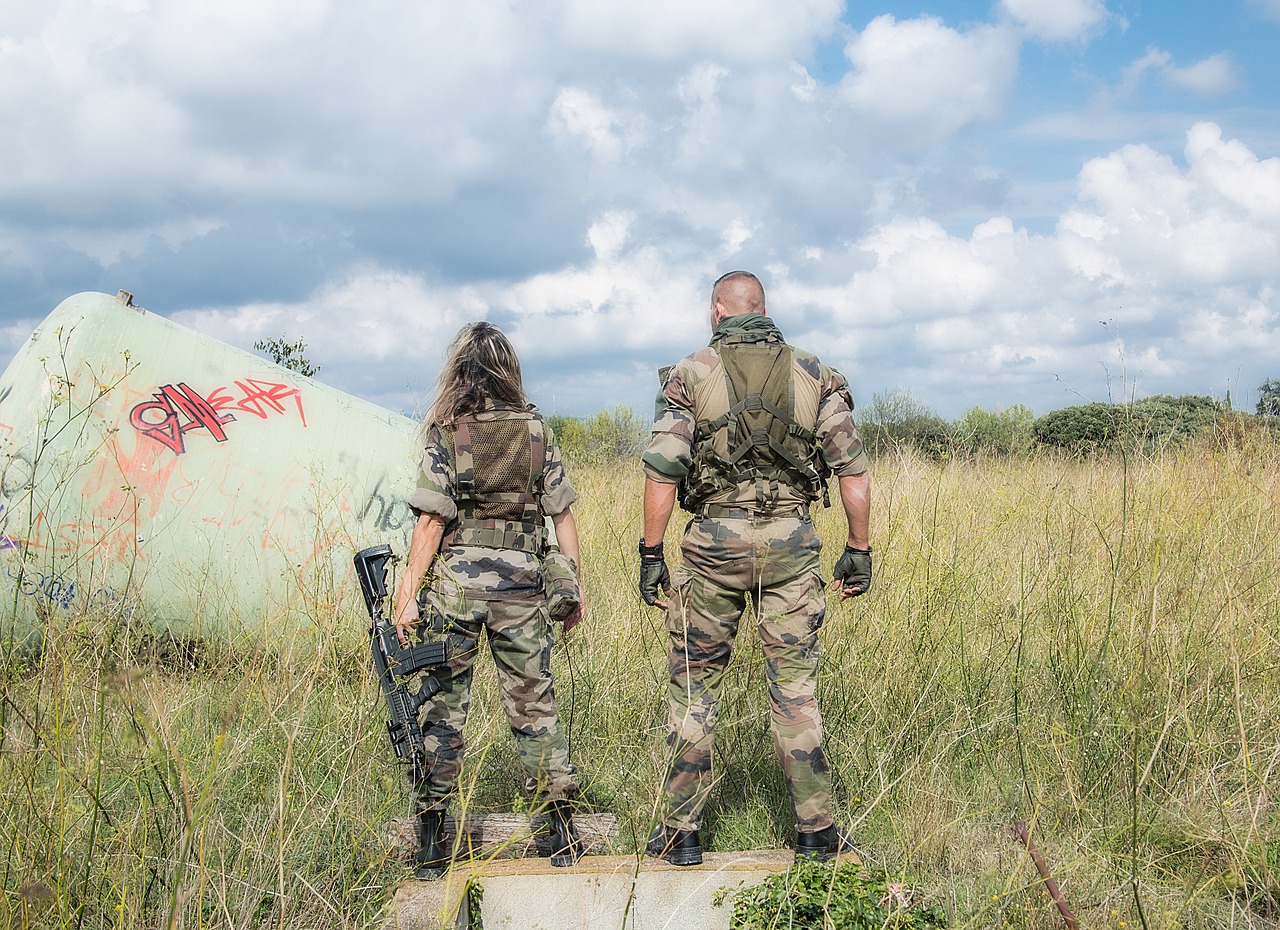
Fixed-Wing Drones
When we talk about , we're diving into a fascinating realm of military logistics that is truly reshaping how supplies are delivered in the field. These drones, resembling small airplanes, are engineered for long-range missions, making them a vital asset in military operations. Imagine being able to transport essential supplies over vast, challenging terrains without putting personnel at risk. That's the power of fixed-wing drones!
One of the standout features of fixed-wing drones is their ability to carry heavier payloads compared to their rotary-wing counterparts. This capability is crucial when considering the logistics of military operations, where every ounce counts. Whether it's ammunition, medical supplies, or food rations, these drones can cover impressive distances, ensuring that troops receive what they need, when they need it.
Fixed-wing drones excel in several key areas:
- Long Range: Capable of flying hundreds of miles without the need for frequent refueling, fixed-wing drones can reach remote locations that traditional transport methods might struggle to access.
- Efficiency: With their aerodynamic design, these drones are more fuel-efficient than rotary-wing drones, allowing for longer flights and reduced operational costs.
- Payload Capacity: They can carry larger and heavier loads, which is essential for delivering significant quantities of supplies in one go.
However, it's not all smooth sailing. Operating fixed-wing drones comes with its own set of challenges. For instance, they require more extensive launch and recovery areas compared to rotary-wing drones, which can limit their operational flexibility. Additionally, their reliance on GPS and other navigation systems makes them susceptible to electronic warfare tactics that could disrupt their missions.
In summary, fixed-wing drones are a game-changer in military logistics. Their ability to deliver supplies quickly and efficiently to remote locations not only enhances operational readiness but also significantly reduces the risk to personnel. As technology continues to advance, we can expect even more innovative uses for these drones, making them an indispensable part of modern military operations.
- What are fixed-wing drones primarily used for in military logistics?
Fixed-wing drones are primarily used for transporting supplies over long distances, especially to remote or hard-to-reach locations. - How do fixed-wing drones compare to rotary-wing drones?
Fixed-wing drones are generally more efficient for long-range missions and can carry heavier payloads, while rotary-wing drones offer greater maneuverability and the ability to operate in confined spaces. - What challenges do fixed-wing drones face in military operations?
Challenges include the need for larger launch and recovery areas, susceptibility to electronic warfare, and regulatory hurdles in certain airspaces.
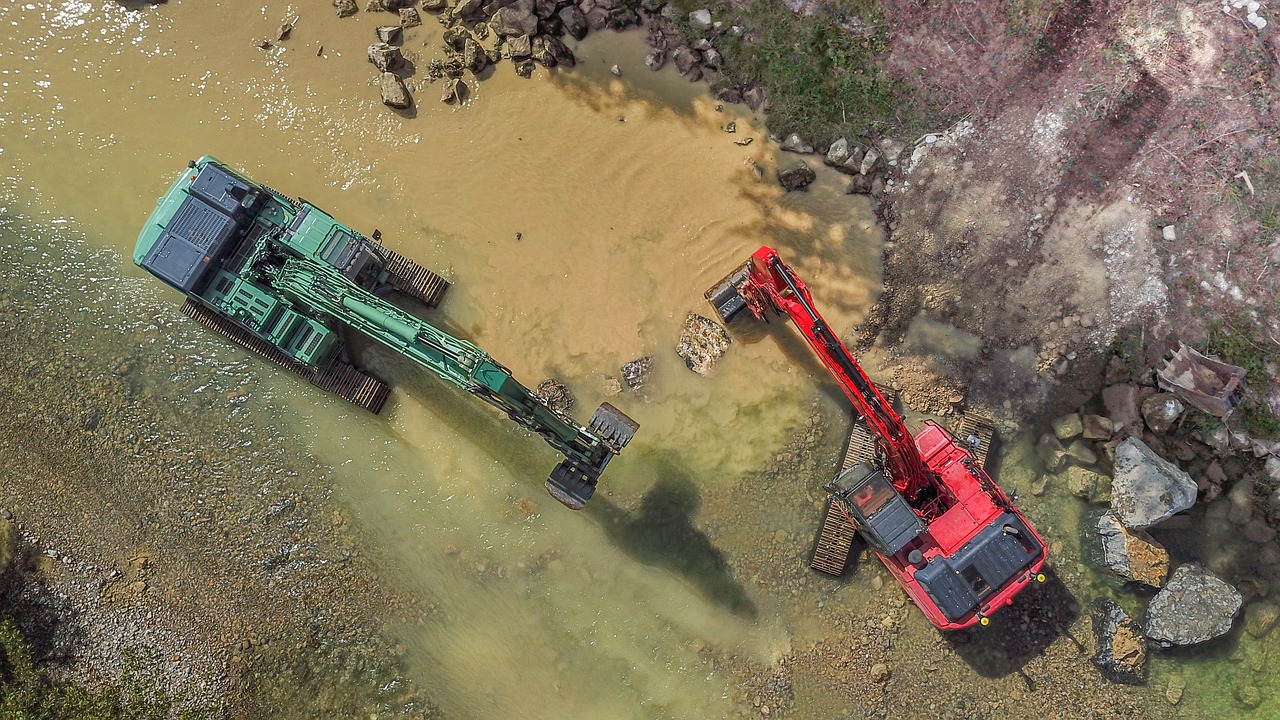
Rotary-Wing Drones
When we think about the future of military logistics, stand out as a game-changer. These remarkable machines, often referred to as helicopters, possess the unique ability to take off and land vertically. This feature is crucial in military operations where space can be limited, and precision is paramount. Imagine a battlefield where traditional vehicles struggle to navigate; rotary-wing drones swoop in, delivering essential supplies right where they are needed most. Their versatility is not just a convenience; it can be a matter of life and death.
These drones are equipped with advanced technology that allows them to operate in dynamic environments. Whether it’s a dense forest, mountainous terrain, or an urban setting, rotary-wing drones can adapt to the challenges presented. Their ability to hover in place and maneuver swiftly makes them ideal for precision deliveries. For instance, they can drop medical supplies to injured soldiers in hard-to-reach areas or transport ammunition to troops engaged in combat without exposing personnel to unnecessary danger.
One of the most significant advantages of rotary-wing drones is their real-time responsiveness. Unlike fixed-wing drones that require runways and larger operational areas, rotary-wing drones can be deployed quickly from a variety of locations. This capability allows military forces to react swiftly to changing situations on the ground. In emergencies, where every second counts, the speed of a rotary-wing drone can mean the difference between success and failure in a mission.
However, the effectiveness of rotary-wing drones is not solely dependent on their design. The integration of cutting-edge technology plays a vital role. Modern rotary-wing drones are equipped with sophisticated navigation systems, enabling them to fly autonomously or be controlled remotely. This technology ensures that they can avoid obstacles, navigate through challenging weather, and even return to base if they encounter problems. The combination of agility and technology makes these drones invaluable assets in military logistics.
In summary, rotary-wing drones are revolutionizing the way military logistics operate. Their ability to deliver supplies quickly and efficiently, combined with their adaptability to various environments, enhances the overall effectiveness of military operations. As we continue to explore the potential of these drones, it’s clear that they will play a crucial role in shaping the future of warfare logistics.
- What are rotary-wing drones?
Rotary-wing drones, commonly known as helicopters, are unmanned aerial vehicles that can take off and land vertically, making them versatile for various applications, especially in military logistics.
- How do rotary-wing drones enhance military logistics?
They provide rapid, precise delivery of supplies in challenging environments, reducing the risk to personnel and allowing for quick responses to dynamic battlefield situations.
- What technology is used in rotary-wing drones?
Modern rotary-wing drones are equipped with advanced navigation systems, autonomous flight capabilities, and obstacle avoidance technology to ensure safe and effective operations.
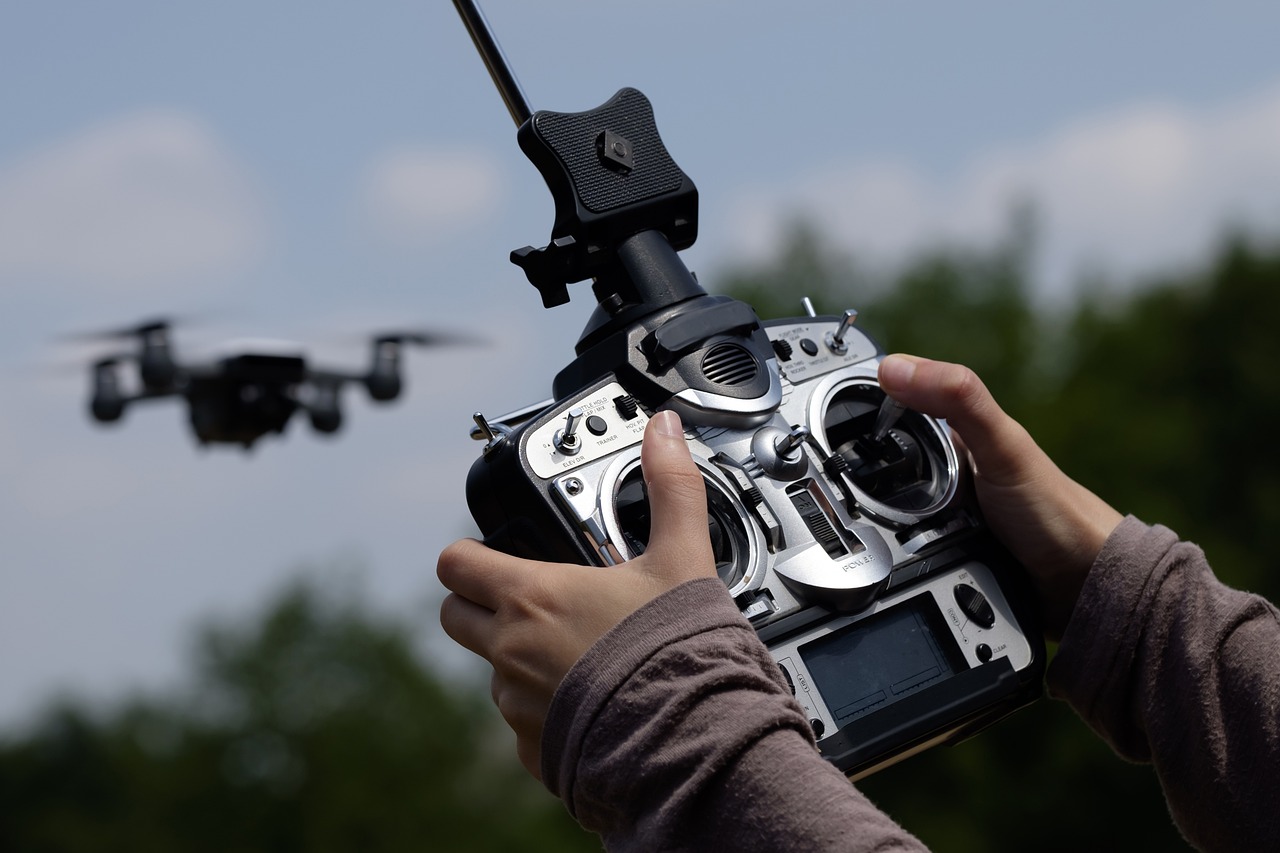
Benefits of Using Drones
The integration of drones into military logistics has ushered in a new era of efficiency and effectiveness, fundamentally altering how armed forces operate. One of the most significant benefits of using drones lies in their ability to deliver supplies rapidly. Imagine a battlefield where every second counts; drones can transport essential goods like ammunition, food, and medical supplies to troops in need without the delays associated with traditional ground transport. This speed not only enhances operational readiness but can also be the difference between life and death in critical situations.
Moreover, drones reduce the risk to personnel. By utilizing unmanned aerial vehicles (UAVs) for supply missions, military forces can minimize the exposure of soldiers to hostile environments. This is particularly important in high-risk areas where ground convoys may be targeted. Drones can fly over dangerous zones, dropping supplies or conducting reconnaissance without putting lives at risk. This capability is akin to having a safety net; it allows military planners to execute missions with greater confidence.
Additionally, drones are remarkably cost-effective. While the initial investment in drone technology can be substantial, the long-term savings are undeniable. Drones require less fuel and maintenance compared to traditional vehicles, and they can operate in challenging terrains where conventional transport might fail. For instance, during natural disasters or in remote locations, drones can quickly deliver aid without the logistical nightmares of road access and infrastructure limitations.
The versatility of drones is another compelling advantage. They can be equipped with various payloads and sensors, enabling them to perform multiple functions beyond just transport. For example, a single drone can switch from delivering supplies to conducting reconnaissance, providing real-time intelligence that is crucial for mission planning. This adaptability can streamline operations, allowing military units to respond swiftly to changing circumstances on the ground.
Furthermore, drones can operate in adverse weather conditions, which is often a significant hurdle for traditional logistics. Whether it’s rain, snow, or rough terrain, drones can maintain functionality, ensuring that supplies reach their destination when they are most needed. This reliability enhances the overall resilience of military logistics, making it a robust solution in unpredictable environments.
To summarize, the benefits of using drones in military logistics can be encapsulated as follows:
- Speed: Rapid delivery of supplies to frontline troops.
- Safety: Reduced risk to personnel by avoiding dangerous ground operations.
- Cost-effectiveness: Lower operational costs in the long run.
- Versatility: Ability to perform multiple roles, from transport to reconnaissance.
- Reliability: Capability to operate in diverse and adverse weather conditions.
As we look to the future, the potential for drones in military logistics is immense. With ongoing advancements in technology, we can expect to see even greater efficiencies and capabilities, further solidifying drones as an indispensable tool in modern warfare.
Q: How do drones enhance supply chain management in the military?
A: Drones improve supply chain management by providing rapid delivery, reducing logistical bottlenecks, and allowing for real-time tracking of supplies, which enhances overall efficiency.
Q: What types of drones are most commonly used in military logistics?
A: The most commonly used drones include fixed-wing drones for long-range transport, rotary-wing drones for precision delivery, and hybrid models that combine features of both.
Q: Are there any risks associated with using drones in military operations?
A: Yes, while drones offer many benefits, they also face challenges such as vulnerability to enemy interception, regulatory hurdles, and limitations in payload capacities.
Q: How do drones operate in adverse weather conditions?
A: Drones are designed with advanced technology that allows them to fly in various weather conditions, including rain and snow, ensuring that they can deliver supplies when needed most.
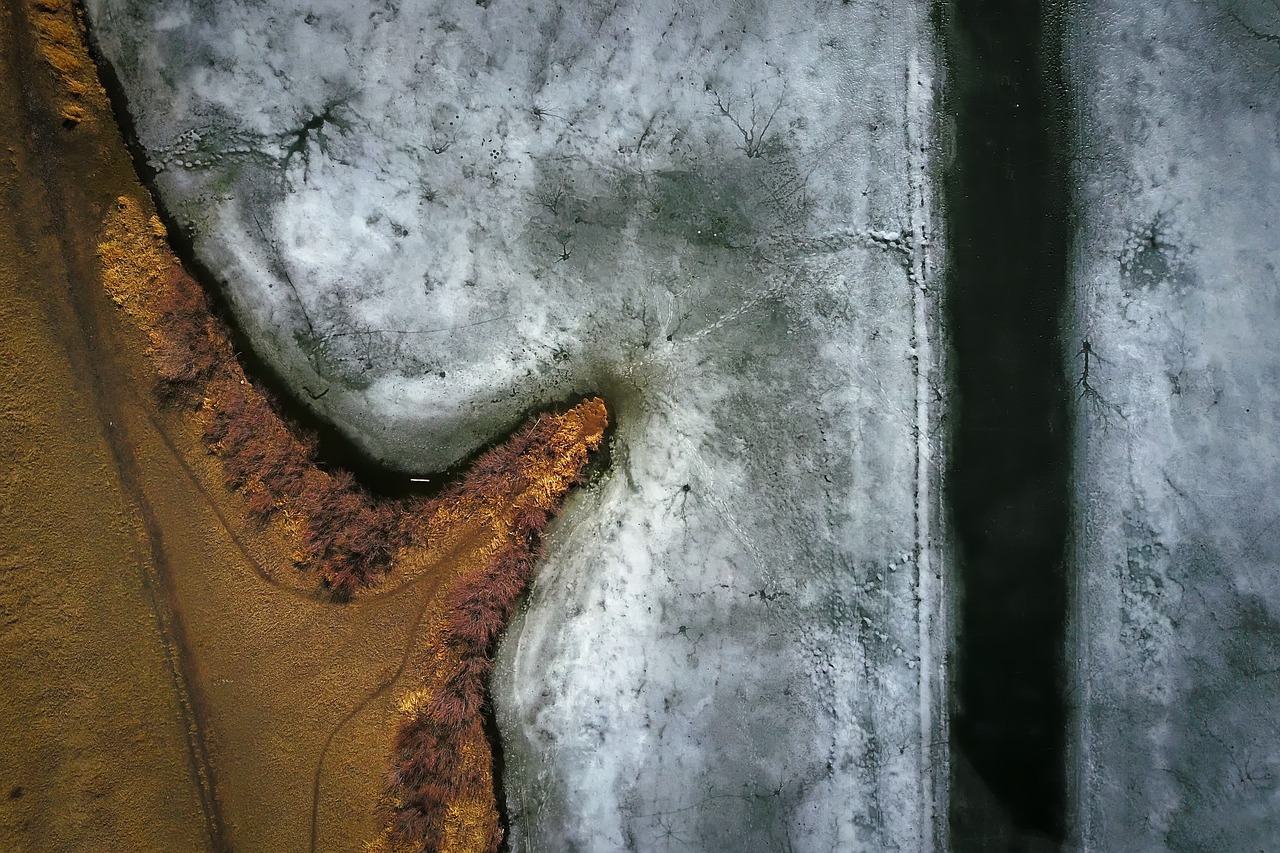
Challenges and Limitations
While drones have undeniably transformed military logistics, they are not without their . One of the primary hurdles is the regulatory landscape surrounding drone operations. Many countries have stringent rules governing the use of unmanned aerial vehicles (UAVs), especially in military contexts. This can complicate deployment strategies, as forces must navigate a complex web of legal requirements that can vary significantly from one region to another. Additionally, the need to comply with international laws adds another layer of complexity. For instance, how do we ensure that drone operations respect the sovereignty of nations and adhere to established rules of engagement?
Another significant concern is the vulnerability of drones to enemy interception. While drones can operate at high altitudes and often outpace traditional aircraft, they are still susceptible to advanced enemy technology such as anti-aircraft systems and jamming devices. This vulnerability can lead to costly losses, both in terms of equipment and mission success. Imagine a scenario where a drone carrying critical supplies is shot down; not only is the equipment lost, but the mission may also be jeopardized, leading to potential casualties on the ground.
Furthermore, the payload capacity of drones is often limited compared to traditional logistics methods. While some fixed-wing drones can carry substantial loads, many rotary-wing drones are restricted to lighter supplies. This limitation can be a significant drawback when transporting heavy equipment or large quantities of supplies, especially in prolonged engagements where resupply is critical. To illustrate this, consider the following table that compares payload capacities across different types of military drones:
| Type of Drone | Payload Capacity | Range |
|---|---|---|
| Fixed-Wing | Up to 800 lbs | 1000+ miles |
| Rotary-Wing | Up to 200 lbs | 200 miles |
| Hybrid | Up to 400 lbs | 500 miles |
In addition to these technical limitations, the operation of drones in combat zones requires advanced technology and skilled personnel. The reliance on sophisticated systems for navigation, targeting, and communication can lead to operational failures if technical issues arise. Moreover, maintaining and repairing these advanced systems in the field can be a logistical nightmare, especially in hostile environments where access to parts and expertise is limited.
Lastly, the ethical implications of using drones in warfare cannot be overlooked. The prospect of autonomous drones making life-and-death decisions raises profound questions about accountability and the moral ramifications of warfare. As military forces continue to integrate drones into their operations, they must grapple with the implications of using machines to carry out tasks that have traditionally required human judgment.
- What are the main advantages of using drones in military logistics?
Drones provide faster delivery times, reduced risk to personnel, and the ability to operate in challenging terrains. - How do regulatory challenges affect drone operations?
Military forces must navigate complex legal frameworks that vary by region, impacting deployment strategies. - What are the risks associated with drone vulnerability?
Drones can be intercepted by enemy technology, leading to potential mission failures and loss of equipment. - Are there ethical concerns surrounding military drones?
Yes, the use of drones raises questions about accountability and the implications of autonomous decision-making in warfare.
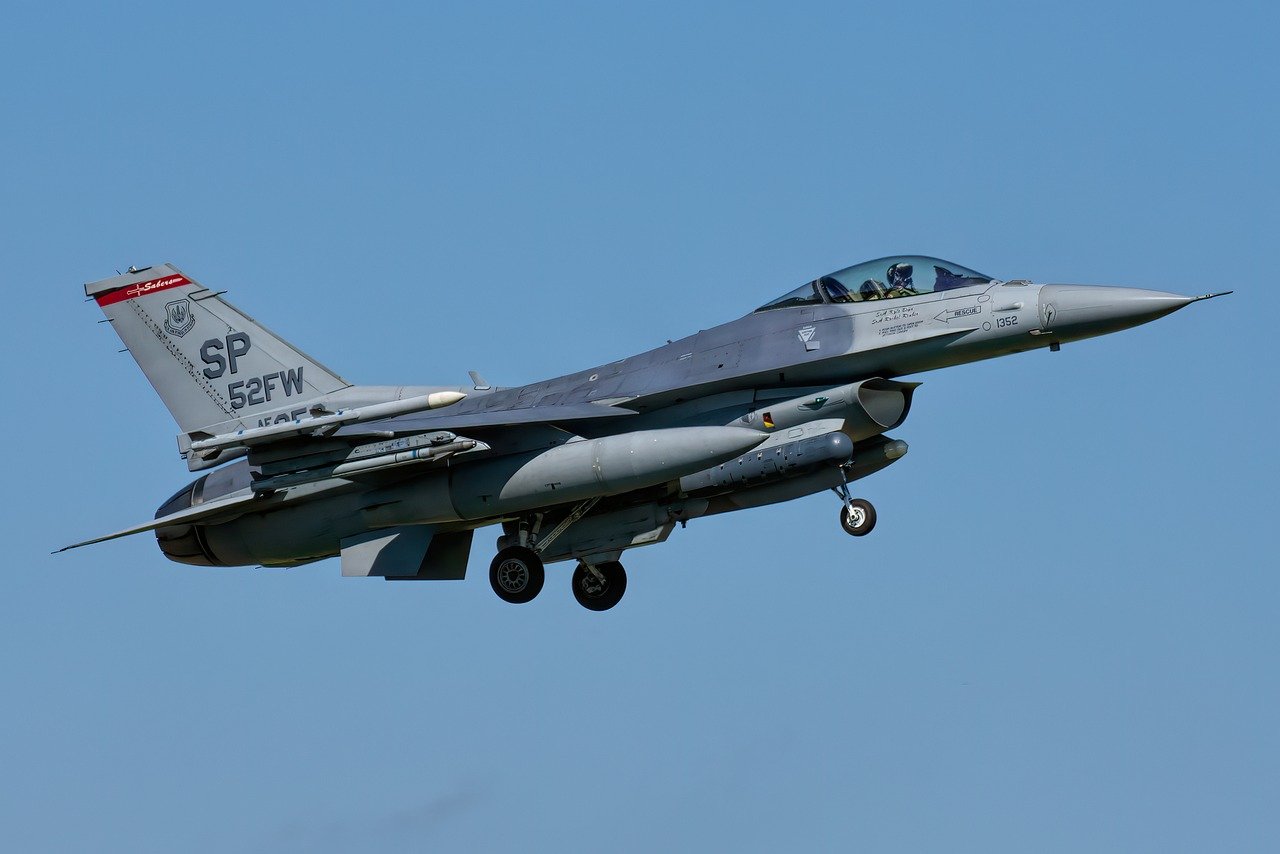
Regulatory and Ethical Considerations
The rise of drones in military logistics has ushered in a new era of efficiency and operational capability, but it also brings forth a myriad of that cannot be overlooked. As drones become more integrated into military operations, the question arises: how do we ensure that their use complies with international laws and ethical standards? This is not just a matter of legality; it's about maintaining the moral high ground in warfare.
One of the primary regulatory challenges is the compliance with international humanitarian law. This body of law governs the conduct of armed conflict and seeks to protect those who are not participating in hostilities. Drones, particularly those capable of autonomous operations, pose significant questions about accountability. If a drone makes a decision that results in civilian casualties, who is held responsible? Is it the operator, the commander, or the manufacturer? The potential for autonomous drones to make life-and-death decisions raises profound ethical dilemmas that the military must address.
Moreover, the issue of privacy cannot be ignored. Drones equipped with surveillance capabilities can inadvertently infringe on the privacy rights of civilians. The ability to monitor activities from the sky can lead to a slippery slope of overreach and abuse of power. It’s crucial for military organizations to establish clear guidelines that respect the privacy of individuals while balancing the need for security and intelligence gathering.
Another aspect to consider is the impact of drone warfare on combatants. The psychological effects of using drones can be quite different from traditional warfare. Drone operators, often situated thousands of miles away from the battlefield, may experience a disconnect from the consequences of their actions. This detachment can lead to ethical questions about the humanization of warfare and the potential desensitization to violence. As the military embraces drone technology, it must also ensure that operators are trained not only in technical skills but also in the ethical implications of their roles.
Lastly, as we look towards the future, the integration of drones into military logistics must also consider public perception. The use of drones in combat zones can lead to backlash from the international community, especially if civilian casualties occur. Transparency in operations and adherence to ethical standards are essential for maintaining public trust. The military must engage in open dialogues about the use of drones, explaining their benefits while acknowledging the associated risks.
In summary, while drones offer remarkable advancements in military logistics, addressing the regulatory and ethical considerations is paramount. The military must navigate these complex waters carefully to ensure that the use of drones aligns with both legal standards and moral expectations. As technology continues to evolve, so too must our understanding and frameworks governing the use of these powerful tools.
- What are the main ethical concerns regarding military drones?
The primary concerns include accountability for civilian casualties, privacy violations, and the psychological impact on drone operators. - How do international laws regulate the use of drones in warfare?
International humanitarian law governs their use, emphasizing the need to protect civilians and ensure accountability for actions taken by military personnel. - Can drones operate autonomously in military logistics?
While some drones have autonomous capabilities, their use raises significant ethical questions regarding decision-making in combat scenarios. - What steps can militaries take to address these ethical concerns?
Militaries can implement strict guidelines, provide comprehensive training on ethical implications, and engage with the public to maintain transparency.
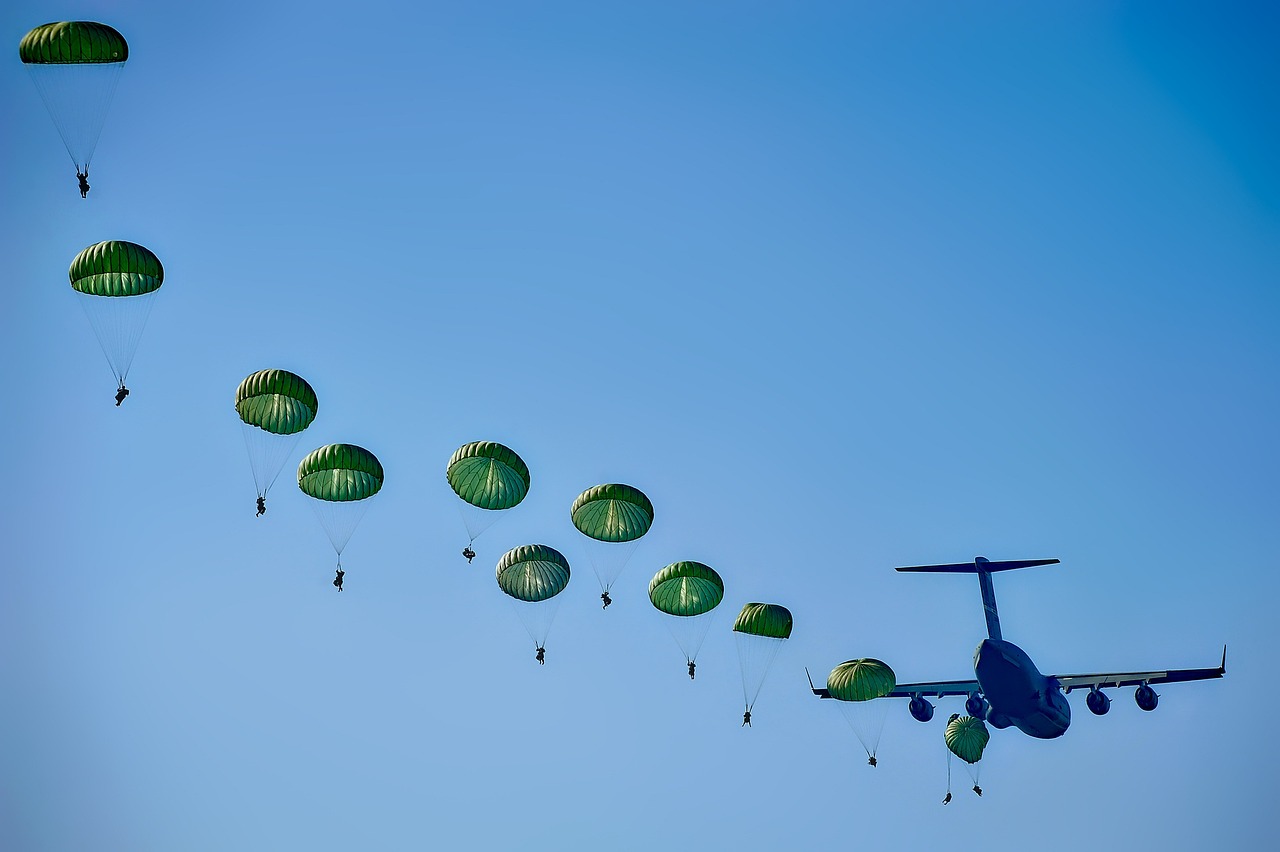
Future of Drones in Military Logistics
The future of drones in military logistics is not just bright; it's positively dazzling! As technology continues to evolve at breakneck speed, we can expect a plethora of advancements that will redefine how military operations are conducted. Imagine a battlefield where supplies are delivered in real-time, tailored to the needs of troops on the ground, all thanks to the incredible capabilities of drones. This is not science fiction; it's the imminent reality of modern warfare.
One of the most exciting developments on the horizon is the integration of artificial intelligence (AI) into drone operations. AI can enhance decision-making processes, allowing drones to autonomously navigate complex environments, avoid obstacles, and even determine the most efficient routes for delivery. This level of automation will not only streamline logistics but also reduce the cognitive load on human operators, enabling them to focus on strategic decisions rather than micromanaging every flight.
Moreover, advancements in payload capacities are set to change the game. As drone technology evolves, we can anticipate the creation of larger drones capable of carrying heavier loads. This means that instead of delivering small packages, drones could transport vital equipment, medical supplies, and even ammunition directly to the front lines, ensuring that troops have what they need when they need it. This capability could be a game-changer in scenarios where traditional supply routes are compromised or inaccessible.
Furthermore, the integration of drones into existing military supply chains is another aspect that promises to revolutionize logistics. By creating a seamless network of drones that communicate with each other and with ground forces, military logistics can become more responsive and agile. For instance, if a unit requires urgent supplies, drones could be dispatched from the nearest base, dynamically adjusting their routes based on real-time data and battlefield conditions.
However, as we look to the future, we must also consider the regulatory and ethical implications of using drones in military logistics. As these technologies become more prevalent, ensuring compliance with international laws and addressing privacy concerns will be paramount. The potential for autonomous drones raises questions about accountability and decision-making in combat situations. How do we ensure that machines make ethical choices in life-and-death scenarios? These are critical conversations that need to happen as we embrace the future of drone technology.
In conclusion, the future of drones in military logistics is filled with potential. From AI advancements to increased payload capacities and enhanced integration into supply chains, the possibilities are endless. As we navigate these exciting developments, we must also remain vigilant about the ethical implications of this technology. The battlefield of tomorrow will not only be defined by the weapons used but also by the innovative logistics solutions that keep our forces supplied and ready for action.
- What are drones used for in military logistics?
Drones are primarily used for transporting supplies, conducting surveillance, and enhancing reconnaissance capabilities in military operations. - How do drones improve the efficiency of military logistics?
Drones enable rapid delivery of supplies, reduce transportation costs, and allow for real-time tracking, which significantly enhances operational efficiency. - What challenges do drones face in military logistics?
Challenges include regulatory hurdles, vulnerability to interception, limited payload capacities, and the need for advanced technology to operate effectively in combat zones. - What is the role of AI in future drone logistics?
AI will enhance decision-making, allow for autonomous navigation, and optimize delivery routes, making logistics more efficient and responsive. - Are there ethical concerns regarding the use of drones in military operations?
Yes, ethical concerns include compliance with international laws, privacy issues, and accountability for autonomous decision-making in warfare.
Frequently Asked Questions
- What are the main advantages of using drones in military logistics?
Drones offer numerous advantages in military logistics, including increased speed of delivery, reduced risk to personnel by minimizing the need for ground transport in dangerous areas, and cost-effectiveness through lower operational costs compared to traditional methods. They also excel in operating in challenging terrains and adverse weather conditions, making them invaluable for modern military operations.
- What types of drones are commonly used in military logistics?
There are several types of drones used in military logistics, primarily categorized into fixed-wing drones, rotary-wing drones, and hybrid models. Fixed-wing drones are suited for long-range missions and can carry heavier payloads, while rotary-wing drones, like helicopters, provide the ability to take off and land vertically, allowing for precise deliveries in tight spaces. Hybrid models combine features of both types for added versatility.
- What challenges do drones face in military logistics?
Despite their benefits, drones encounter several challenges, such as regulatory hurdles that can limit their deployment, vulnerability to enemy interception, and limited payload capacities that restrict the amount of supplies they can transport. Additionally, they require advanced technology to ensure reliable operations in combat zones, which can be a barrier to widespread adoption.
- How do drones improve the efficiency of military supply chains?
Drones enhance military supply chains by enabling rapid delivery of essential supplies directly to the front lines, significantly reducing the time it takes to get resources where they are needed most. Their real-time tracking capabilities allow for better visibility and management of logistics operations, ensuring that troops have what they need, when they need it, thus improving overall operational effectiveness.
- What are the ethical considerations regarding the use of drones in military operations?
The use of drones raises important ethical questions, particularly concerning compliance with international laws, privacy concerns, and the implications of autonomous decision-making in warfare. As drones become more integrated into military operations, it is crucial to address these issues to ensure responsible usage and adherence to ethical standards.
- What does the future hold for drones in military logistics?
The future of drones in military logistics appears bright, with advancements in artificial intelligence, improved payload capacities, and better integration into existing military supply chains. As technology continues to evolve, we can expect drones to play an even more critical role in shaping modern warfare and enhancing logistical capabilities.

